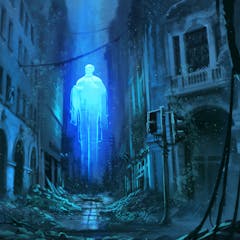
Articles on Speculative fiction
Displaying 1 - 20 of 24 articles

100 years in the future, 40-year-old Esther is the first of 47 sleepers to be ‘woken’ from cryogenic suspended animation in an underground bunker. Where are her children?

Mykaela Saunders’ Indigenous speculative fiction collection Always Will Be, published in the year following the failed referendum, is a very timely endeavour.

Research suggests the act of creative writing can have therapeutic benefits.

Married couple Woppa Diallo and Mame Bougouma Diene won for their powerful short story A Soul of Small Places.

In the Global South, a group of writers are rejecting the norms of science fiction and commenting on the future in a way that embraces Indigenous culture.

An alternate timeline that ends with a Nobel prize for Exxon’s CEO.

In the shadow of the climate crisis, a wave of speculative stories ask what it means to live in a world where everything is not an extractable resource — and where humans are not in control.

Noongar author Claire Coleman’s new novel forces us to question what we value and how we live by combining dystopia and utopia, in a near-future very like our own.

What might our future look like? Together, these speculative fiction stories offer a First Nations response to this burning question.

In his latest novel, Steve Toltz cements his reputation as an exceptional comic writer.

Part historical novel, part speculative fiction, A History of Dreams examines the themes of inequality and authoritarianism from the perspective of a coven of witchy young women.

Stories about alternative worlds can be a powerful way of critiquing the problems of our own world.

Fantasy fiction provides more than escapism for young readers.

Even in a world where 99% of the male population is dead, patriarchy is still a very comfortable pair of shoes and very easy to slip into.

Afrofuturism allows Black people to not only imagine their distant futures but also how to survive the anti-Black present.

We need to create a transport system that is zero carbon – and socially just – in only a few years. We just need to recognise that it’s possible.

Speculative writers flesh out our passing thoughts into complete, functioning societies and explore how they might unfold.

As we enter the age of the Anthropocene, there is a growing recognition of different kinds of ‘un-real’ storytelling.

In this vision of the future, everything that we currently do in the real world – going to school, going to work, socialising, leisure – is done in a vast virtual environment.

The future and the past, money, technology and politics documented and imagined in fact and fiction, in an economist’s recommended reading.
